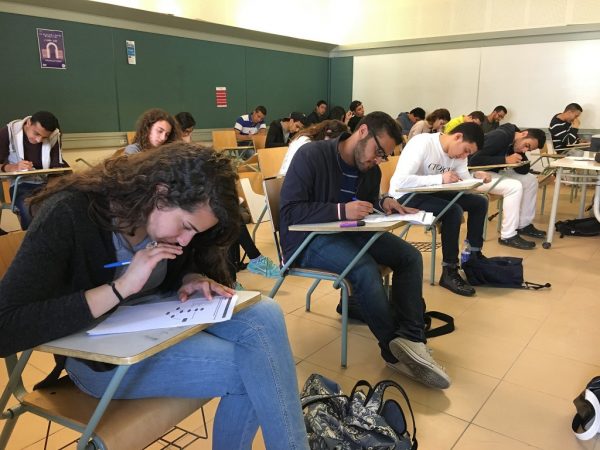Is Education Caught in the Crossfire? How Students Deal with Mental Illnesses

@PakinamElGohary
Depression is a common mental health disorder, affecting more than 350 million people of all ages worldwide, according to the World Health Organization (WHO).
Among those people are university students who must manage their academics under the weight of with depression and other mental health issues.
According to a 2007 study featured in the American Journal of Orthopsychiatry by the American Psychological Association, the estimated prevalence of any depressive or anxiety disorder was 15.6 percent for undergraduates and 13.0 percent for graduates.
Over the years, AUC’s professors have embraced different strategies in dealing with depressed students.
N.M., a Political Science and Economics junior, has suffered from extreme depression and received massive support provided by her professors to facilitate her academic life.
“My GPA dropped by 0.3 points, and I didn’t attend classes for a month and a half. My counselor sent emails to all my professor stating my problem so that they would consider my case and allow my absence marks to be removed,” she said.
“Most of them were very understanding to the extent they all offered to help with the course materials that I had missed. Another professor weighed the whole percentage [of my grade] on the paper I have done in order to accommodate my inability to do presentations because of anxiety,” the 21-year-old student added.
However, not all the reactions were as positive as those she encountered.
Marwa Hussein, senior counselor at the student counseling center since 2004, also told The Caravan that there could be cases of students who make up excuses in order to avoid doing their assignments, leading to professors disbelieving the students that require help.
This would provide a fair chance for students suffering from depression to compete for grades.
Sherin ElModa, adjunct faculty at the Department of Journalism and Mass Communication, has witnessed around 8 depression cases throughout her 17 years of teaching.
According to ElModa, depressed students usually sit right at the back or right at the front. She also added that she only offers extension of deadlines because she cannot remove assignments or give exams at home.
“I may even push the deadline for the whole class simply to accommodate just one student,” ElModa said.
“Depression is a very big umbrella that includes several symptoms, but the most common one is the lack of interest in the things the person used to do and has been doing for a long period of time. Among other symptoms, you will have lack of sleep or too much sleep, too much eating or little eating, lack of concentrations and attention, as well as having a lot of negative thoughts, memories, and anticipations,” Hussein added.
There are a fine number of different types of depression, yet the most common type on campus according to Hussein is what is called mild depression.
“I have seen a lot of [cases of] mild depression on campus, in which a student goes out every day to work but they don’t have the interest and they are not as happy as they are and they don’t want to do a lot of activities that they used to do,” she said.
Hussein encourages students to talk to their professors to reach a suitable compromise between the two.
In her experience, some professors would ask for a report or even contact her with the consent of the student, and she would consequently outline the case.
“I don’t have authority as a counselor to tell the professor what to do or what not to do especially if there is not special accommodation offered, but with consent of students I can tell if the case of the student is affecting their academic performance. And it’s up to the professor to do whatever they wish and think is appropriate.”




